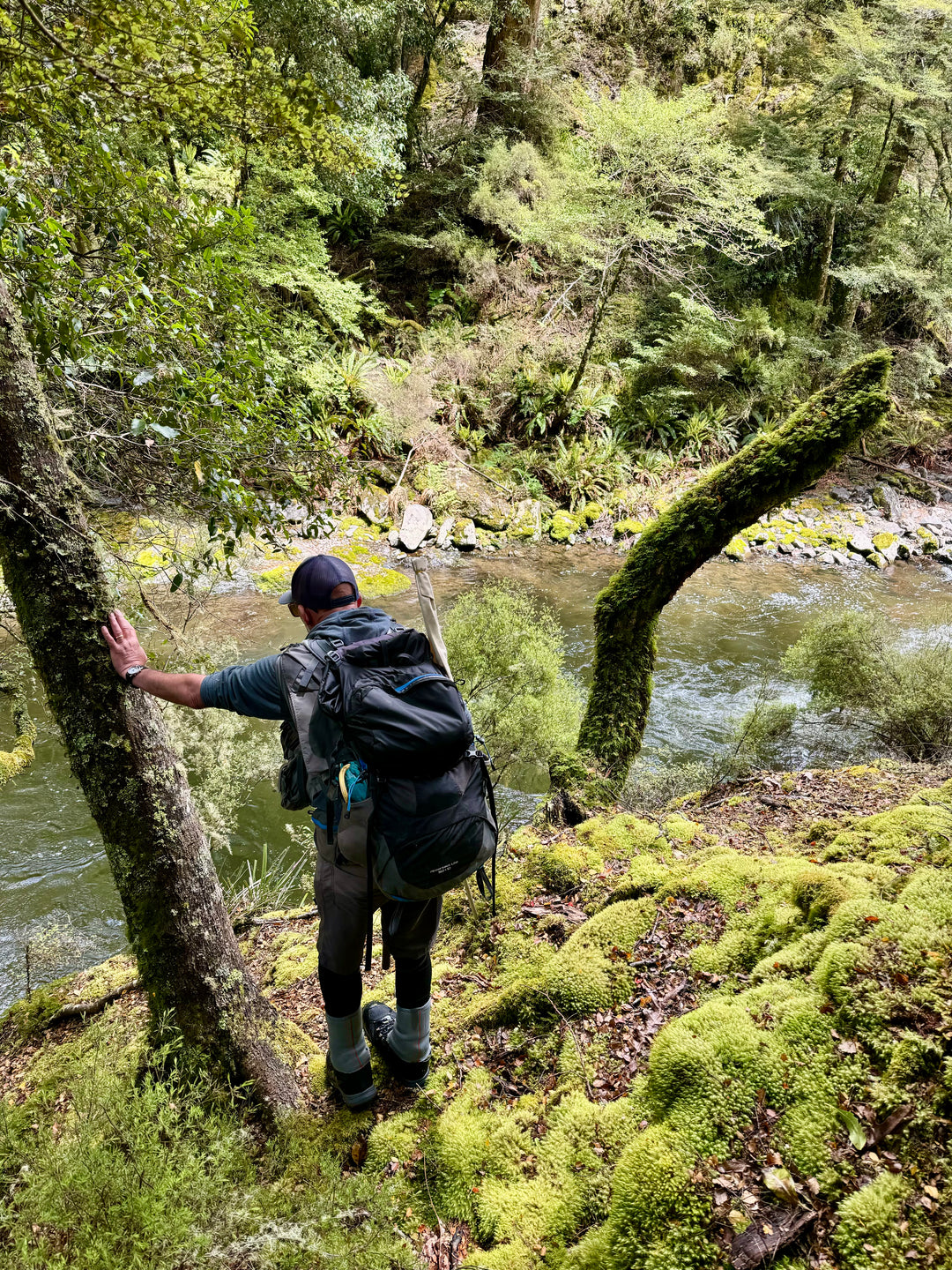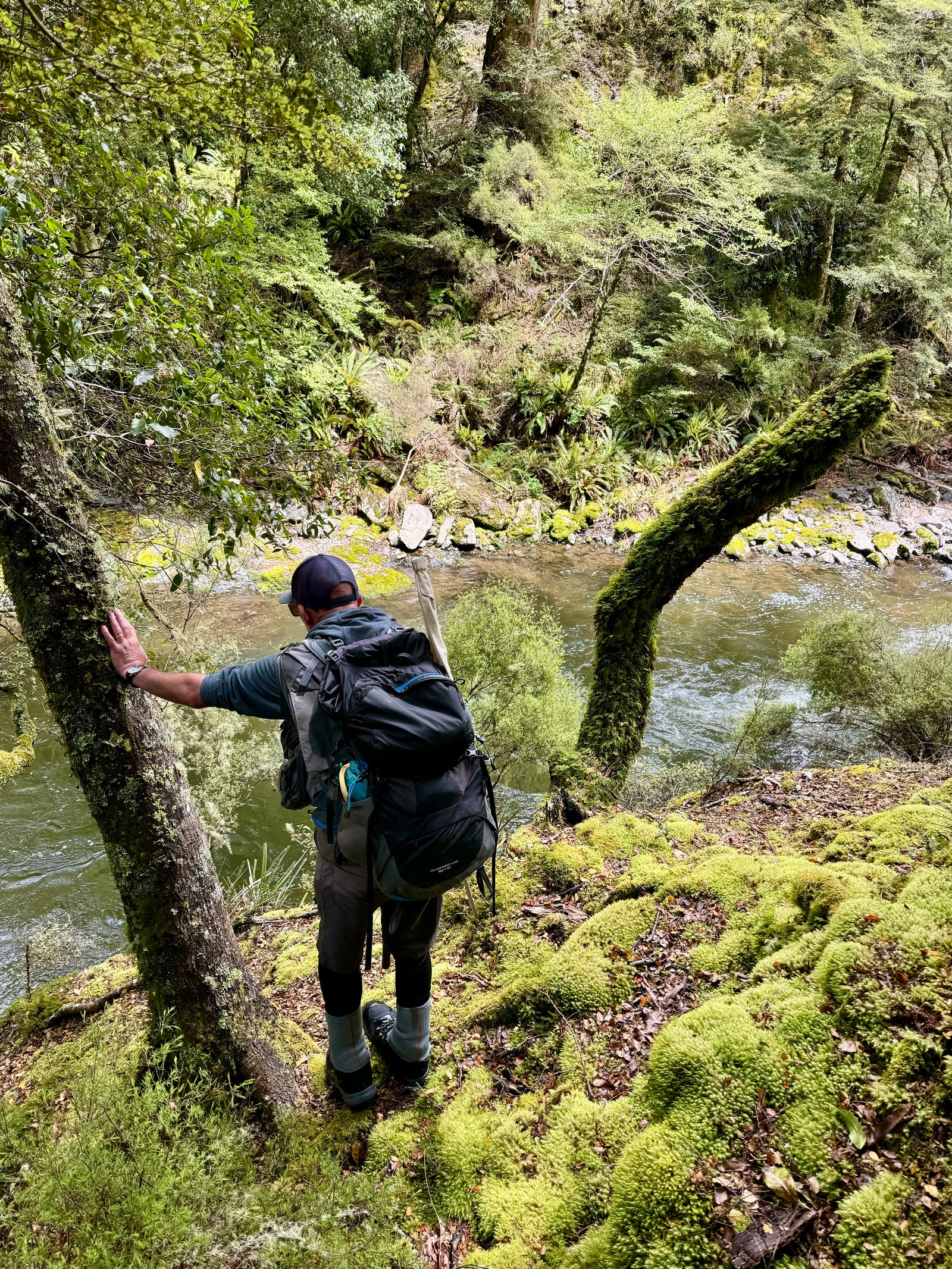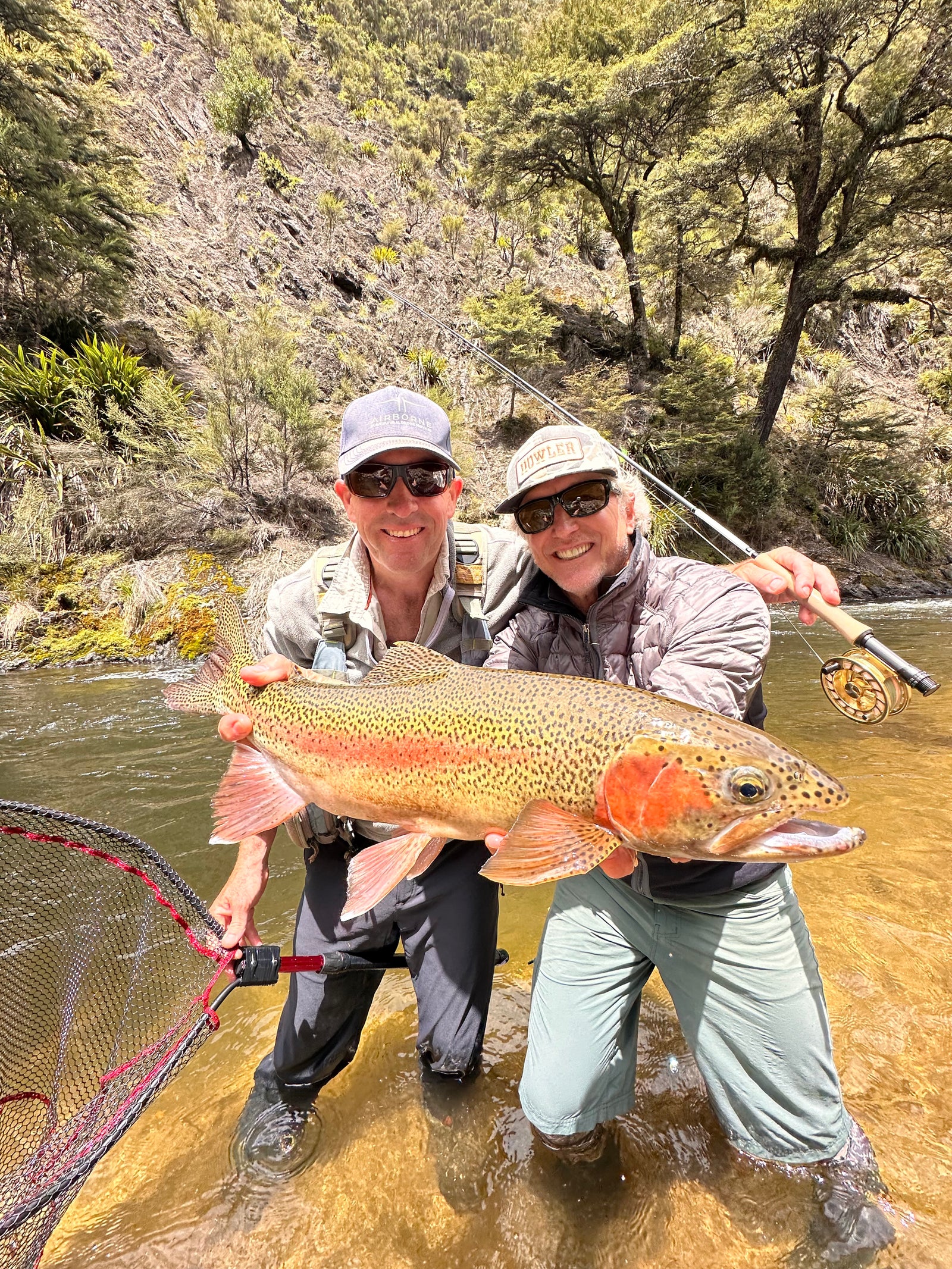The last time I was in New Zealand I was in college, and I remember feeling partially confused, envious, and very curious when leaving. I
was too young to contemplate the emotions, but I distinctly remember how I felt. I also remember sitting on a bus headed to Queenstown and a good friend telling me a story about one of his buddies who visited New Zealand in a similar fashion and never left.
Fast forward 20+ years, and it didn’t take long once my wading boots were on the ground for the emotions to return. The same, recurring question circled around me the entire trip—Why haven’t I been back here?
Most likely due to hackles often being raised in grizzly country at home, dealing with tiger prints in the Himalayas, large sharks in
the Indian Ocean, or crocs in Australia, etc. there was another theme that kept circling around me consistently when we were deep in the backcountry: There are no predators here that can kill you, how can that be? It was a very
pleasant thought to sit with, deep in the backcountry.




On the fishing front, I had plenty of takeaways from our trip—too many—but for starters:
• Fishing for trout in New Zealand is very similar to saltwater fly fishing. 99% of our fishing was sight fishing except for a couple of spots that just looked too good. Once a fish has been spotted, studying the fish’s behavior and anticipating what it might or might not do is much more important than contemplating your equipment.
• Pay attention to your drift. Luckily the fish are for the most part stationary and not passing through, which in turn gives you adequate time to think about your drift. The first cast is everything; the more casts you make at that fish decrease your odds of catching it.
• Teamwork is crucial, as it should be in all guided fishing scenarios, but it is often lost when wade fishing. Maybe it is the separation that takes place when one is in the water and the other is in the tree spotting (as opposed to the confined environment of the flats boat, drift boat, etc.). Take notice of what your guide is studying, and follow suit.
• On the dry fly, wait, and then wait again. I was very humbled by the amount of time necessary to wait prior to setting the hook when you get an eat on a dry. Coming from cutthroat country, I thought I had this one pinned, but apparently not.
• Where are the small fish? A topic for another time, but really where are they?
On the logistical front, I also had several takeaways:
• The professional helicopter culture in New Zealand is wildly impressive. In the past I have struggled with small crafts in the air at times—not so much on this trip, and I attribute that to the culture.
• Be ready to pivot. On one flight we were diverted by weather mid-flight. We ended up making a pit stop on a river no one had been to. Instead of overthinking the weather, a couple of rods were put together, and it wasn’t long before a very large rainbow was at hand. Just roll with it.
• We were fortunate enough to fish both the North Island and the South Island, and the difference in access is quite significant. Planning and info on the South Island is more crucial than the North Island. The size of the fish and the rivers do not lend themselves to fishing behind anyone!
• The country, culture, and people of New Zealand are spectacular, and they are protective of what they have for good reason.



Time won’t get in the way of my next trip to New Zealand, and we look forward to curating unique fishing opportunities for years to come.
-Chur












